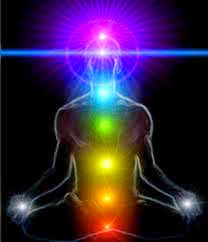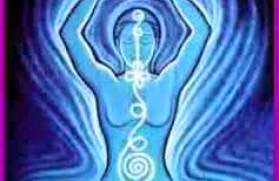
I was fortunate in that I always viewed my kundalini encounter as a process of spiritual growth, of expurgation. Therefore, I surrendered to its movements, welcomed and embraced them without resistance even though I had no knowledge of what was happening or where it was leading me. I found it liberating as it released me from the emotional baggage I had been carrying over a lifetime. The Divine of my previous experience was suddenly boundless and expansive, and the sacredness and bliss of the experience allowed me to see the world radically different. But as kundalini burnt away the negative emotional baggage of past experiences, many other things changed as well. Many of the ways I had defined myself, that gave me that sense of who I was in relation to the exterior world were revamped. My intellectual understanding of them did not change, but much of the affective memory in relation to them was gone.
The Christian paradigm which had contributed greatly to my previous self-definition had little to offer by way of explanation as to what was happening. In the months following, my research led me to a new paradigm, a new archetypal model that facilitated the integration of my kundalini experience.
 |
| The Chakras |
In Eastern philosophies, an archetypal model exists for what is referred to as the subtle body. The subtle body is everything that is not represented by our solid physical bodies. In Eastern medicine, the structure and the dynamics of the subtle body are studied in the same manner as the physical anatomy in order to understand its functioning, purpose and methods of treatment. Western medicine does not recognize many aspects of the subtle body because it is not visible; however, it is slowly being recognized in our western approach to medicine through procedures such as acupuncture.
The Eastern tradition teaches that there are three diaphanous veils or sheaths that make up the subtle body: the energy sheath, the mental sheath, and the discernment sheath. A brief description of each is as follows:
The energy sheath is a vital process that animates the human system that allows it to sense and function. It is partially made up of nadis or energy channels that intersect with six major chakras or energy centres. The six principal chakras are associated with the physical body’s nerve plexuses and gland systems that manifest from their energy. Chakras, also called spinning wheels, function properly when there is a balanced flow of energy through the nadis which cause a cyclical sensation in the chakra area. The chakras and locations are as follows:
- Muladhara or Root Chakra at base of spine and perineum area,
- Svadhisthana or Sacral Chakra in genital area,
- Manipura or Solar plexus Chakra in the navel area,
- Anahata or Heart Chakra in heart area between the breasts,
- Vishuddha or Throat Chakra in throat area and back of neck,
- Ajna or Third eye Chakra between the brows.
- The Sahasrara padma or crown located at the top of the head is another critical point of the energy sheath.
 |
| The Subtle Body |
The mental sheath consists of the conscious and unconscious mind and is broken down into three aspects or functions:
The first is called “Chitta,” or the unconscious storehouse of past impressions or imprints. This function of the mind might be described as a vast reservoir of memories, parental injunctions, unresolved issues, cultural conditioning, contradictions, tendencies, repressed habits and drives and impressions from past life experiences.
The second is called “Manas,” or the sensory motor mind. This function is objective, reflexive, the carrier out of orders. It can be trained, but also responds to habits, instinct or impulse. Data from the senses is registered here, and actions coordinated. Acting automatically, doubts arise here as well as perceptions by selective inattention.
The third is called “Ahankara,” or the ego. This function is one of self-definition and self-concepts. The boundaries of the personality, our attachments, aversions, and habits are defined here creating its sense of "I-ness." The ego denies what it cannot identify, and owns what it does identify.
The discernment sheath called “Buddhi” is reflective consciousness. This is the higher mind carrying out discriminative functioning. It is often referred to as the “inner voice” where reason, will, values, ethics come into play. It is the place where we make decisions and choose a course of action based on one’s true nature and purpose. It is the place of contemplation in relation to philosophical concepts, human qualities, culture or art. It is the gatekeeper of the unconscious from which there is both an inflow and outflow.
(Adapted from "Kundalini Vidya: The Science of Spiritual Transformation" by Joan Harrigan)
At the time of my forty day retreat, I was not familiar with this Eastern Philosophy. This was something I explored after returning home. The retreat experience that I engaged in brought forth many unexpected and certainly unintentional results that would take many months for me to resolve and many years to understand. In order to share the experience of this retreat, I will use the above model as a backdrop.

No comments:
Post a Comment